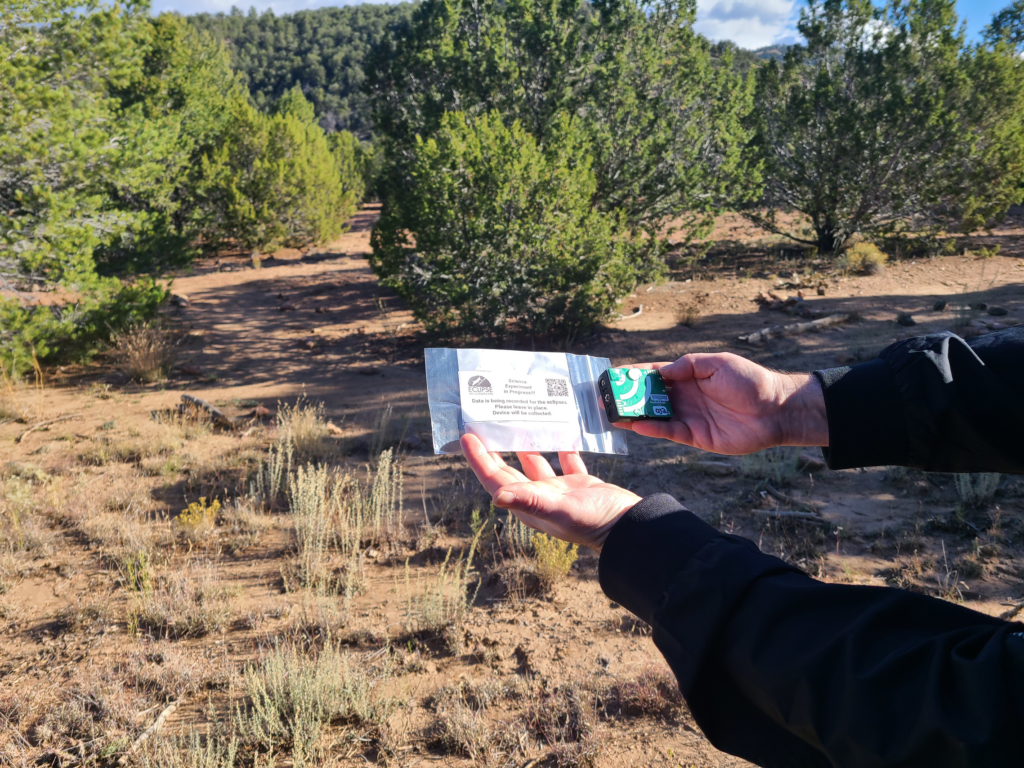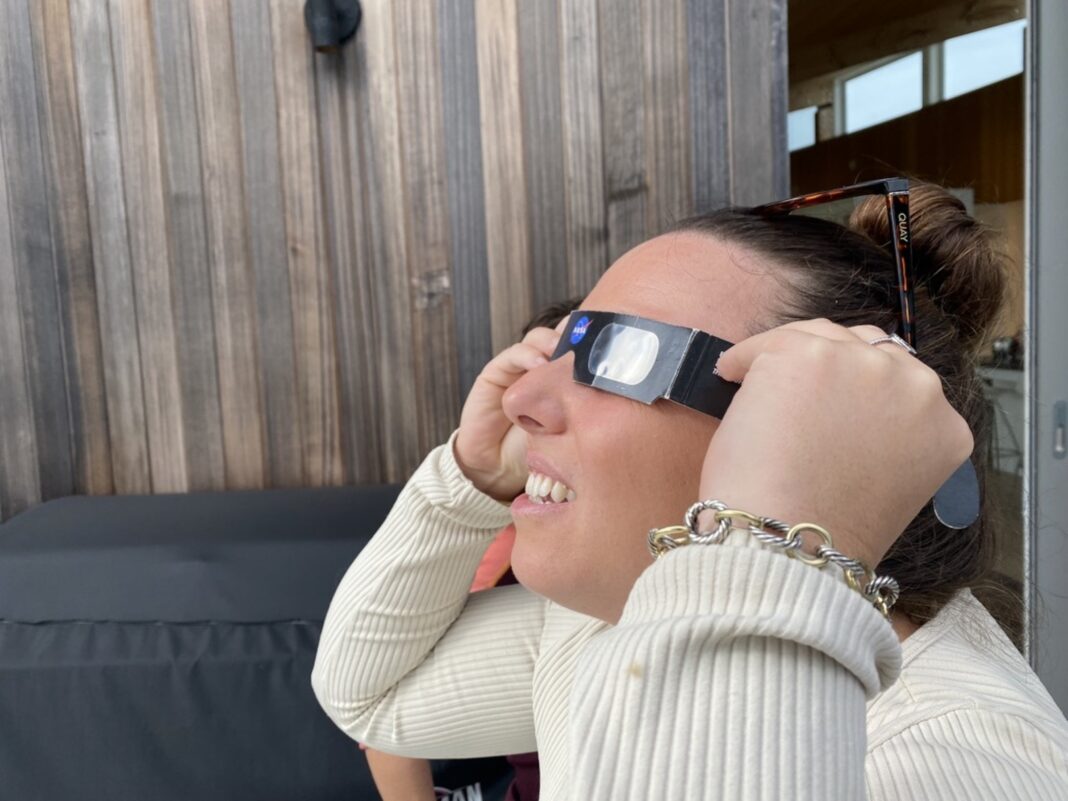Get ready to bust out those special glasses (and AudioMoths) on April 8.
Traditionally, we think of solar eclipses as something that you experience visually.
For anyone who has seen one, it’s that feeling of awe you get when the moon completely blocks the sun, and everything is bathed briefly in darkness — totality.
Bluedot Living Digital Projects Manager Kelsey Perrett will be watching with her protective glasses on, but she’ll also be listening. “Of course, the visual experience is very powerful, but there is a lot of evidence that suggests you can experience an eclipse with multiple senses,” Kelsey said. Kelsey works with the Eclipse Soundscapes Project, a NASA-sponsored Citizen Science initiative, to study how eclipses affect plants and animals on the planet, including humans. As Communications Coordinator for the project, and an active Data Collector, Kelsey has a special job to do when the sky goes dark.
Bluedot Living: How and why was the Eclipse Soundscapes Project created? What kind of work did you do when you first got involved?
Kelsey Perrett: The project was actually created based on a citizen science study from 1935. The initial study looked at a total solar eclipse that passed over New England in 1932. For the first time, the general public was asked to go out and see, feel, and hear the changes that occur during an eclipse: how did their pets respond to the eclipse, how did wildlife respond to the eclipse?
People started sending in tons of observations; crickets chirping, birds going to roost. The anecdotal evidence of wildlife changes dates back a really long time. But not a lot of modern, ridgid scientific studies have been done since then to prove or disprove some of this information.
The project is led by ARISA Lab, based in Medford, Massachusetts. It is led by an astrophysicist and an educator. For a long time their work and research has been about solar eclipses, and how to make the experience of a solar eclipse accessible to the general public, so that anybody can enjoy it.
BDL: What role do you play in this research? How are you monitoring environmental changes caused by an eclipse?
KP: There are two roles that are going to play a part in this study, both on the day of the eclipse and the days surrounding it. One role, the observer experience, asks people to go out and simply record and send in what they notice. The other role is the data collector experience, and those folks are actually taking little audio recorders called AudioMoths and placing them in natural soundscapes. We are going to place them out two days before the eclipse and collect them two days after the eclipse, so we will have a sample of soundscapes surrounding the eclipse that will set a baseline, and then we will measure if there are any auditory changes that occur during the eclipse.

We also hope to gather a little more information on people’s feelings around eclipses. So we have a lot of survey questions asking people what they felt inside, and what they noticed people around them feeling.
BDL: What effects on wildlife, and what changes in the natural soundscape, do you expect to see during the upcoming eclipse on April 8?
KP: Well, there might be multiple changes in the environment that you can feel, like the temperature change when the sun gets blocked out. Some people might be able to hear changes. A lot of people have reported changes in the acoustic soundscape during totality, which is the phase of a solar eclipse when the moon is completely blocking out the sun. We suspect that wildlife is responding as if the sun has gone down, so if you are a nocturnal form of wildlife, you might suddenly think it’s nighttime and do whatever you do at that time of day. For diurnal animals that are typically awake and active during the daytime, they might have the opposite experience, where suddenly their day has ended and they are going off to do their nighttime routine.
Eclipses aren’t strictly visual, we can experience them with all of our senses, which makes it a much more rich experience. This realization means that people who don’t have sight as one of their senses can still have a really amazing time.
BDL: Can you share some tips for maximizing your solar eclipse experience?
KP: I am hoping to experience totality somewhere in New England — northern Vermont, northern New Hampshire, and parts of Maine will be able to see one hundred percent totality. Everyone in the contiguous United States, and in Canada and other parts of North America, will experience either a full or a partial eclipse. If you have the appropriate safety gear, like eclipse glasses, you will be able to experience some form of eclipse. The areas that will experience totality fall on a diagonal arc across the United States, starting in Texas and ending in Maine.
BDL: What’s your favorite thing about solar eclipses, and about the work you’re doing?
KP: My favorite thing about working with this project and getting people amped about the eclipse in general is, the more people that know about it, the more people have access to all these tools to experience an eclipse, the more people are going to be connected to these natural processes. When you see these grand celestial events, it’s really inspiring — you know it’s a shared experience that so many other people are having at the same time, it’s a feeling of being a part of something much bigger.
In 2017 I actually got to go out to Nebraska and experience totality. It was such an amazing experience. I had heard early on that some people follow eclipses like the Grateful Dead. I think once you have that experience, you really get it. It inspires so much awe.
Check NASA’s site for the path of totality. Check out this list of safe solar viewing glasses and filters compiled by the American Astronomical Society. Anyone looking to learn more about the Eclipse Soundscapes Project, or get involved in either of the Citizen Science roles, can head to eclipsesoundscapes.org.



